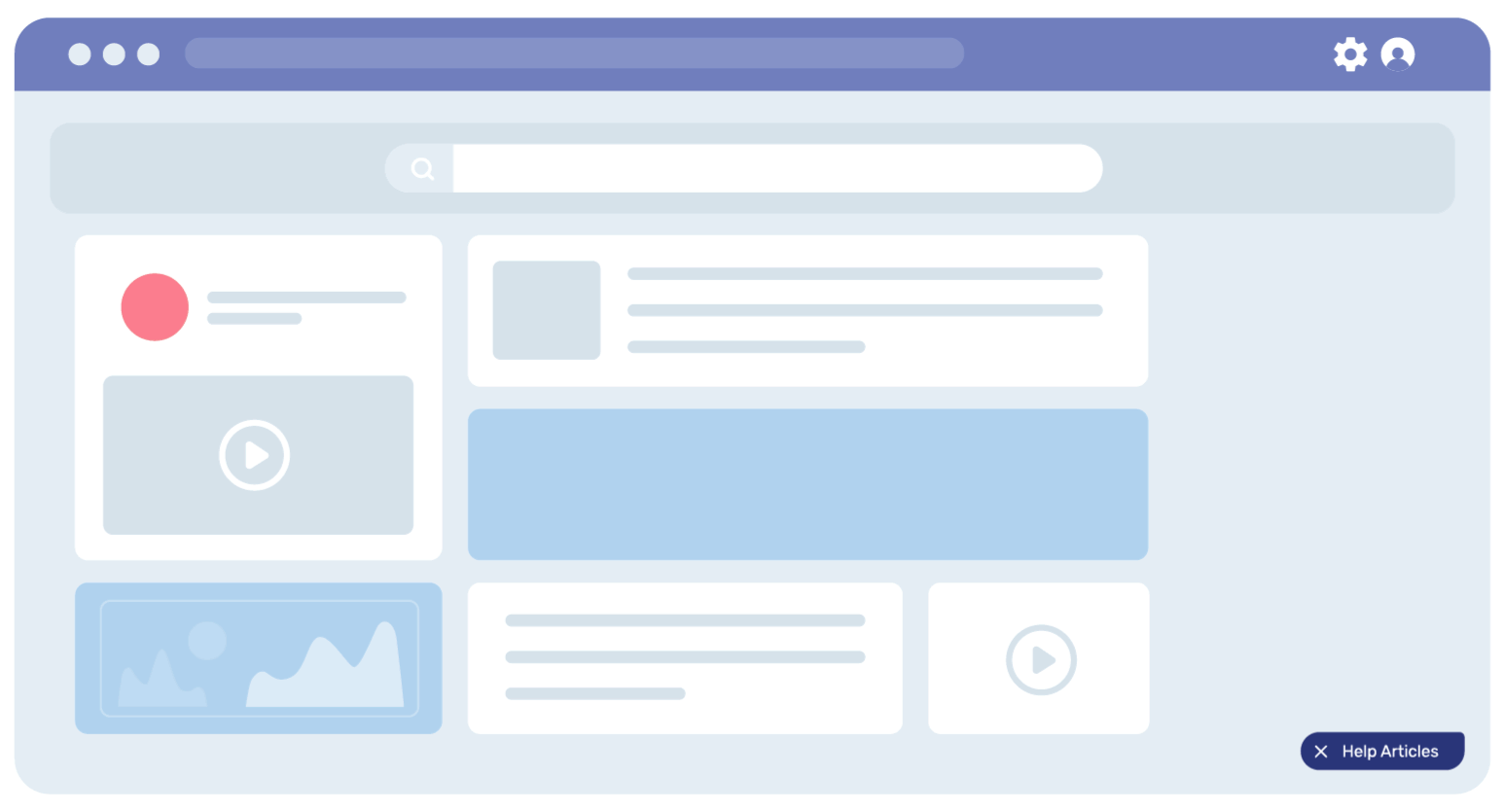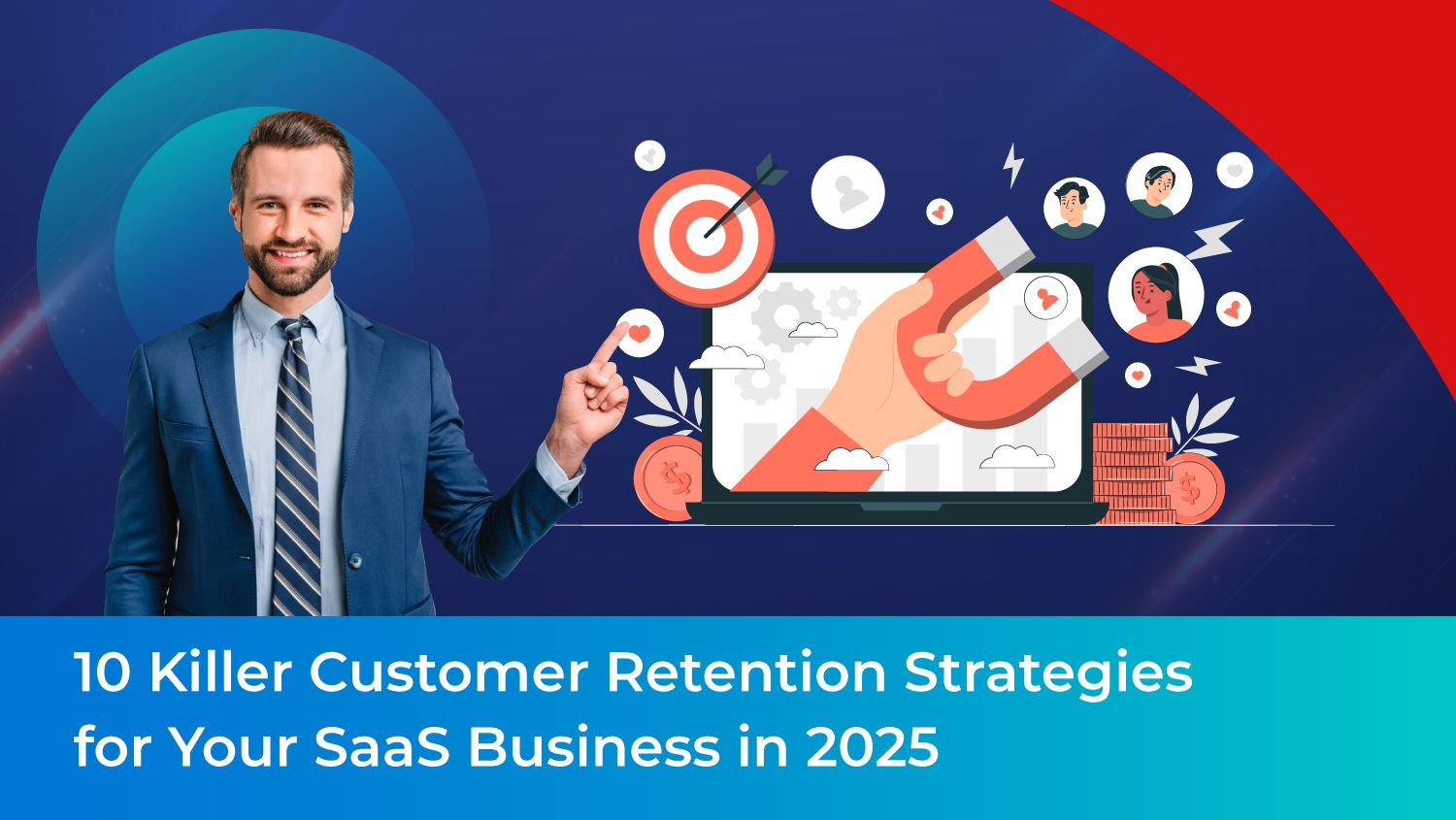The age-old question "Is it more profitable to acquire new customers or retain existing ones?" has a clear answer: retention wins. Acquiring a new customer can cost up to 5x more than keeping an existing one, and even a modest 5% boost in retention can drive profits up by 25% or more.
This is especially true for SaaS businesses, where the sales cycle is longer, onboarding is more involved, and competition is uncanny. Every new customer needs considerable time, effort, and resources to convert, so once you win them.
That’s why customer retention in SaaS isn't just a metric, it's a growth strategy.
In this guide, we’ll walk you through 10 proven customer retention strategies tailored specifically for SaaS companies in 2025, along with the tools and tactics you need to drive loyalty, reduce churn, and increase lifetime value.
Use the Table of Contents below to jump to the section most relevant to you:
- What Is Customer Retention in SaaS?
- Why SaaS Must Prioritize Customer Retention in 2025
- The 5 R’s of SaaS Retention
- Top 10 Customer Retention Strategies for SaaS Companies
4.1 Provide Interactive In-App Onboarding
4.2 Gamify Your Product Experience
4.3 Personalize In-App Content and UI
4.4 Engage Users with Progress Reports
4.5 Use Targeted Content Marketing Outside the App
4.6 Build Feedback Loops, Not Just Surveys
4.7 Reduce Churn with Preemptive Support
4.8 Invest in a Knowledge Hub with Microlearning
4.9 Reward Power Users & Brand Advocates
4.10 Track the Right Retention Metrics (and Share Them) - Top Tools to Boost SaaS Customer Retention
- Final Word
- Frequently Asked Questions About SaaS Retention
What is Customer Retention in the Context of SaaS?
Customer retention (at its core) is a company’s ability to keep its existing customers over a specific period of time. It’s the process of making sure your SaaS customers continue to be paying customers, rather than switching to a competitor or discontinuing use.
Businesses across all industries retain about 75% of their customers over a given period (usually annually or monthly, depending on the context).
In simpler terms:
If 100 customers started using your product at the beginning of the year, around 75 of them are still customers by year-end, and 25 have stopped doing business with you (i.e., churned).
Why It Matters:
- It’s cheaper to retain a customer than acquire a new one.
- Retained customers buy more often, spend more, and refer others.
- A high retention rate is a strong indicator of customer satisfaction, product value, and brand trust.
Why SaaS Must Prioritize Customer Retention in 2025
Customer retention is a KPI for your brand’s growth. According to ProfitWell, a 5% increase in retention can boost profits by up to 95%, and retained customers are 2–3x more likely to refer others.
This is even more critical for SaaS businesses, where the cost of acquiring users is steep, onboarding is time-consuming, and success depends on long-term usage. Unlike B2C platforms where one-time purchases can still drive profitability, SaaS revenue depends on customers renewing, engaging, and upgrading.
So, how can your SaaS product turn new users into loyal power users?
The 5 R’s of SaaS Retention
Use this as your strategic lens for designing retention strategies:
- Reach – Target the right users and tailor messaging post-acquisition
- Reassure – Deliver quick wins through onboarding and support
- Reward – Reinforce engagement with recognition and value
- Remind – Keep users informed, active, and connected
- Retain – Continuously improve based on feedback and usage data
Top 10 Customer Retention Strategies for SaaS Companies
1. Provide Interactive In-App Onboarding
Interactive onboarding makes sure your users see value fast. Whether it’s a tooltip, modal, or walkthrough, in-app guidance can dramatically reduce friction in the first session.
For example, Loyaltics, a marketing analytics tool, saw a 50% increase in user retention after implementing tooltips and guided flows for new users.

How to implement it: Use plug-and-play solutions like Gyde to build interactive onboarding. One SaaS startup (anonymized) using Gyde reduced time-to-activation by 37% and increased week-4 retention by 28% by guiding users to their "aha" moment in less than 5 minutes.
2. Gamify Your Product Experience
A Gartner report on gamification found that more than 50 percent of those in charge of company innovation are adding some sort of gamification.
For example, ClickUp uses gamified checklists during onboarding, motivating users to "complete their workspace setup." Notion gamifies learning templates and usage streaks through badges and rewards for top contributors.
Ideas to try:
- Progress bars for onboarding
- Login streaks
- Points for feature adoption
- Milestone unlocks

3. Personalize In-App Content and UI
Personalization increases retention by making users feel the product is “just for them.”
For example, Asana and Loom both allow users to customize their workspace layout, branding, or theme, helping users form an emotional connection with the product.
Personalization tactics:
- Use names and roles in UI
- Show relevant feature suggestions
- Let users choose layout, theme, or preferred actions
4. Engage Users with Progress Reports
Progress is motivating, especially when it’s visual. Weekly usage summaries and benchmarks can reinforce value and re-engage dormant users.
For example, Grammarly sends weekly emails showing writing stats, vocabulary ranking, and achievements. Notion sends automated reminders for task reviews or workspace milestones.

Add:
- Usage summaries via email or in-app
- Compare user performance with peers
- Trigger nudges when progress dips
5. Use Targeted Content Marketing Outside the App
Email is still the top channel for SaaS user retention. 61% of marketers say email drives the highest ROI for engagement (Investis Digital).
For example, Yoast sends users SEO tutorials tailored to their CMS and site health. Loom emails content about video communication best practices based on industry (e.g., product, HR, sales).
Here are some content ideas:
- Personalized product tutorials
- Industry-specific tips
- New feature previews
- Community success stories
6. Build Feedback Loops, Not Just Surveys
Don’t just collect feedback, act on it visibly. In SaaS, feedback isn't a one-time event; it should feel like an ongoing conversation.
For example: Notion has a transparent changelog and public roadmap, where user suggestions are marked “In Progress” or “Released.” This makes users feel heard and involved.
Ideas to implement:
- In-app feedback widgets (ask: “Did this help?” or “What’s missing?”)
- Add emojis to rate features (Slack-style)
- Feature voting boards (like Canny or Trello boards)
Close the loop by letting users know when their feedback influenced product updates.
7. Reduce Churn with Preemptive Support
Your support shouldn’t wait for users to reach out, it should predict and prevent drop-off points.
For Example: Intercom offers “predictive support” by triggering help messages when users get stuck mid-flow or haven’t activated key features.
How you can do it: Use tools like Gyde’s AI-powered Digital Adoption Platform (DAP) to uncover exactly where users struggle inside your product. For instance, if you’ve built a walkthrough on “How to Register for an Event,” Gyde can show you:
- Where users drop off during the process
- How many are viewing the guide (vs. skipping it)
- Whether the walkthrough helped users complete the task
With these insights, you can fine-tune your flows, add contextual nudges, and update your guidance, before users decide to give up.
Retention insight: The faster you remove friction, the longer they’ll stick around.
8. Invest in a Knowledge Hub with Microlearning
Retention improves when users master your product.
For example: ClickUp University offers 2–10 minute product tutorials that help users become power users, without needing to book support or search YouTube.
What works:
- Short, searchable video tutorials (microlearning)
- Contextual help embedded in the UI
- On-demand walkthroughs (Gyde can auto-generate these based on workflows)
9. Reward Power Users & Brand Advocates
Loyal users who promote your product should feel like VIPs. Retention grows when people feel valued.
For example, Webflow’s User Awards recognize top designers. Figma’s community highlights user-generated templates and plugins.
Add:
- Referral rewards
- Beta access to new features
- Spotlight customers in newsletters or blogs
- Create a “Champions” program (think: Slack’s MVP community)
10. Track the Right Retention Metrics (and Share Them)
What gets measured gets improved. These metrics help you understand user behavior, prevent churn, and iterate with purpose.
Key Retention Metrics:
- Customer Retention Rate (CRR) – % of customers retained over time
- Churn Rate – % of customers lost
- Product Stickiness – DAU/WAU or DAU/MAU
- Time-to-Value (TTV) – How fast users reach their first "aha" moment
- Customer Lifetime Value (CLTV) – Revenue a user brings before churning
Pro Tips:
- Don’t need to track everything at once. Start with CRR, Churn Rate, CLTV, Adoption Rate and NPS…then expand based on your product maturity and data infrastructure.
- Create a retention dashboard using Mixpanel, Amplitude, or your internal BI tools and review it weekly with your product and CS teams.
Top Tools to Boost SaaS Customer Retention
Customer retention in SaaS is no longer guesswork. Today's tools let you proactively engage, support, and delight your users at every step. Here’s a curated list of tech-powered solutions designed to make retention easier and effective:
1. CRM (Customer Relationship Management)
CRMs help you simplify customer conversations, track interactions, and align teams across marketing, sales, support, and success, all of which directly impact retention.
- CRMs designed for SaaS, like GoSquared, offer behavior-based customer profiles and automated outreach features that make it easier to deliver personalized, omnichannel experiences.
- Bonus: Integration across departments means no drop-offs in communication, a key reason customers stay.
2. Loyalty & Rewards Programs
Loyalty isn’t just for eCommerce. SaaS companies can build customer engagement through incentives and referral-based rewards.
- Tools like Yotpo let you create custom loyalty programs even if you don’t have your own physical or digital products to give away.
- You can tap into Yotpo’s partner network to offer third-party rewards, encouraging ongoing product usage and brand advocacy.
3. Customer Support Platforms
Reliable, scalable customer support is essential for retention, especially when users face roadblocks.
- Instead of building in-house forums or systems, use platforms like Zoho Desk or Freshdesk to set up multi-channel support, ticketing systems, and knowledge bases quickly.
- These platforms help your team stay responsive and deliver great support from day one.
4. Interactive User Guides & Onboarding
Great onboarding often determines whether a customer sticks around or churns.
Use a Digital Adoption Platform (DAP) like Gyde to build interactive walkthroughs, in-app guidance, and contextual help articles. For example, let’s say a user is trying to set up their first analytics dashboard inside your SaaS product.
Gyde can:
- Trigger a step-by-step walkthrough that shows how to add data sources, select metrics, and publish the dashboard
- Display contextual help articles if the user pauses or hovers over a specific element
- Offer multilingual content so users in different regions can onboard in their preferred language

- Track completion rates and drop-off points so you can continuously optimize onboarding
- Enable instant updates to guides and help content without needing developer involvement
By proactively supporting users during critical setup moments, you reduce confusion, boost engagement, and improve long-term retention.
Increased Product Adoption and Retention with Gyde
In SaaS, acquiring customers will always matter, but retaining them is where sustainable growth talks begin. Yes, you want your users to stick around; but for it to happen, you need to enable them to succeed with your product every step of the way.
That’s when Digital Adoption Platforms like Gyde can help. They don’t just plug into your app, they embed retention into your product experience through intuitive onboarding, contextual support, and behavior-driven insights.
If you’re serious about reducing churn, increasing lifetime value, and building a product users want to come back to, it’s time to shift from reactive support to proactive enablement.
FAQs
1. Does it make sense for SaaS companies, being product companies, to incorporate third-party customer retention software? Or should they build everything in-house?
Building all functionality in-house might not be feasible in terms of time and money. Firstly, for activities being performed by your teams, like customer relationship management or email marketing, you can use third-party products like Salesforce or MailChimp without your product users being exposed to the third-party app directly.
This question only arises when you consider in-app functionality like interactive user guides, should you use an external product to deliver such in-app features to your users. The answer is still yes - your tech team should focus on the core functionality of your SaaS product while you use external plugins or APIs for additional, peripheral features.
2. What is the best way to select existing users when creating a focus group, either for feedback or beta testing?
Based on analytics, always. Good metrics are return users, engagement, and session duration. Then divide users by low, medium, and high for each metric and take a mixture of all three groups, so you get feedback from people with different levels of interest in your product.
3. Is it okay to push different modes of messaging (email, push-notifications, in-app popups, etc.) at once for a particular message or just pick one?
This is dependant on the message. If you're running a sale and feel users will benefit from it, you can push them on all mediums, and they won't mind. If you're pushing promotional messaging to users on multiple channels, they could get frustrated with the constant notifications.
Firstly, use each medium for its respective purpose - email for marketing, information, and general content, push notifications for user-specific notifications (like a new message), and in-app popups for app-specific notifications (like a new app feature).
That being said, you can mix and match depending on the message, as long as you're not bombarding your users with notifications constantly.


